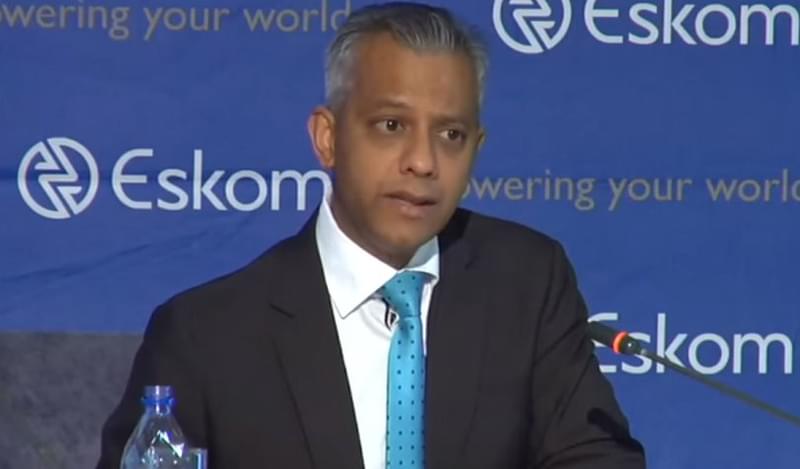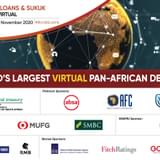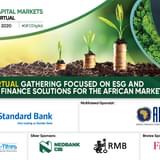African markets have struggled severely in recent months and look set to have a tough year, but what are you seeing in South Africa and what are some of Eskom’s concerns?
One of the biggest challenges in South Africa right now is the development of enough energy to sustain the economy’s growth ambitions. With Eskom specifically, one of our challenges is the ability to securitise our future revenue streams. It isn’t a new concept, and across the world most of the utilities are regulated so to some extent deal with this too. It is a lever that we will look at pursuing, but there are challenges from a legal and regulatory perspective.
The volatility we see in the global economy, and South Africa’s role within it, is a huge concern. Add to that mix the commodity alliance of Africa’s economies and we begin to see some serious impacts. That volatility translates into an impact into our own economy, notwithstanding the structural issues that we have in South Africa.
If you look at the structural issues in our own economy, and Eskom’s issues, one of the key problems is that we’re not providing enough electricity into the market to sustain economic growth, which is estimated to have a 1% impact on the country’s GDP. We have been a drag on the economy, and the state’s balance sheet to some extent by virtue of our self-imposed inability to access the debt capital markets on the strength of our business – and there are a whole range of reasons for that.
Over the next 3-5 years we are hoping to be in a position where we can address those challenges. We are aiming to move from a position of being in a power supply deficit to a surplus by bringing new generation capacity online, which will have a positive impact on the economic growth of the country. Given that there is a good probability of this becoming a reality, that will also have a positive impact on our ability to participate in fuelling the power needs of the Sub Saharan
African economy more broadly. We currently have 45,000 MW of installed capacity, and over the next five years we will see in excess of 10,000 MW being added to that, primarily through coal-powered fire stations and hydroelectric generation, and a big chunk of the capital plan being approved also goes towards maintaining our existing capacity.
You mention a ‘self-imposed inability’ to access the debt capital markets. Can you help unpack that for us? Can you give us a sense of where the funding to fuel Eskom’s ambitious growth plans will come from?
If we were to issue Eurobond today I’m fairly certain we would be able to achieve it and that there would be significant appetite. But there is a cost there, which relates to some of the factors that affect us – many of which are exogenous to our fundamentals.
If we borrow in the US compared to borrowing in South Africa, the spreads are just too wide. There are alternatives available to us including financing from stakeholders like DFIs and ECAs that we can tap quite easily, so it’s a commercial decision rather than a structural decision to say these markets are closed – because the cost of financing in those markets are prohibitively expensive.
We have a very deep domestic market and we issue bonds in South Africa under the domestic MTN R150bn programme. Other sources include the World Bank, the African Development Bank, and other DFIs – like the China Development Bank (CDB). They are supporting us through the BRICS initiative, and a cooperation agreement signed between the South African and Chinese government. Through that initiative we have a US$5bn Memorandum of Understanding (MoU) with CDB which we will hopefully conclude within the next six months and convert into a facility. Since that agreement was penned, other DFIs have started coming back to the table – which is helping with our diversification strategy. ECAs also form a big component of our capital raising programme; there are significant benefits to partnering with ECAs for a credit enhancement.
We are also starting to look at other forms of alternative capital raising from new markets, such as sukuk. Our funding programme now allows us to actively explore those markets in a bid to further diversify our funding sources.
DFIs are becoming more prominent in Africa, as one might expect given the countercyclical nature of their role in the sector. To what extent has this impacted Eskom’s capital markets strategy?
If you isolate the local DFIs, they have an issue of balance sheet capacity and are already heavily exposed to Eskom, so they need to diversify and get into other sectors. But what we’ve seen is the likes of DBSA are working in collaboration with local DFIs, and South African local DFIs are being used as a conduit for other DFIs, which gives them a wider balance sheet to put to use in other areas.
When you’re looking at the nuances around the local DFIs, it also comes down to the fact that by mandate, there is a link to government. And to the extent that they don’t support Eskom through their balance sheet, it comes down to this mandate. I think they believe Eskom can borrow on the strength of its own balance sheet, albeit with government guarantees, which is why they look to other sectors and use their balance sheet to stimulate them. To some extent we see the same with foreign DFIs. They also have to look for counterparties, and the lines associated with counterparties. So it also allows the government balance sheet to be maximised and leveraged rather than being exposed to one balance sheet. It’s about the national government finding out what its imperatives are, and maximising the lines that are available from the foreign DFIs.
We have also a maturing process in our local DFIs over the past 10 years. In the past they would compete with the local banks, whether in agriculture or logistics or other sectors, and the local DFIs would pick up the slack where other banks can’t play. But given the changes in regulations on the banking side with Basel III and the like, we’ve seen DFIs like the DBSA play a more significant role in the banking space because they aren’t exposed to the same kinds of capital requirements that local banks are.
How have the current market conditions influenced Eskom’s approach to managing its treasury operations?
It always comes down to your risk mitigation strategies and how sophisticated they are, so that you can manage the challenges as they come – whether they be interest rate risk, liquidity risk, FX risk, or whatever the risk may be. And I think diversification of our funding sources is one of the strongest risk mitigation tactics we can deploy. The last think you want is to be in a position where you have excess liquidity risk and no diversification of funding. In that sense, diversification is the most potent tool you have because then you’re not simply being a price taker. We need to be in a position where we aren’t a price taker, but a player that can sit somewhere between setting and managing price when it comes to the cost of debt.
So the key question is: How do we diversify and how do we play one source of funding against another so as to manage liquidity risk on one side, and the cost of funding on the other? Our debt splits into 55% local and 45% hard currency, and within that hard currency component we see almost an even split between Euros and US dollars. But we don’t take any exposure on that because our revenues are in Rand. So we can borrow at a low dollar cost, but when it comes to converting that and the interest back into Rand, that’s where we might take on some added cost.
We manage deb sustainability through our asset liability management programme, and to the extent that we have long term assets we need to put ourselves in a position where we have longer dated liabilities. Unfortunately, in the case of Eskom, because of the balance sheet position we are in, we have tended to be on the short side, so we do take on some re-pricing risk. But if you look at the facilities we are negotiating now, they are all longer dated – from 10 to 15 years in tenor, and we have inflation linked bonds that are issued with maturities of 25- 30 years. So where the opportunity exists to get longer tenor, we take it. But we are cognisant of the cost that it can sometimes incur to secure those tenors.
The refinancing risk in Eskom’s case is lower. By virtue of the regulatory nature of our business in terms of tariff application, you are more or less guaranteed a return. So you have natural asset-liability matching through that mechanism. In addition to that, we have access to government guarantees. At the end of the day it’s really about being proactive in managing our liquidity position knowing that the debt is going to mature. In terms of our liability management processes, we look at these things way in advance.
Speaking with others we get the sense a South African sovereign downgrade is imminent. How will a downgrade impact Eskom?
Downgrade pressure has been in the pipeline for some time. In 2013 Eskom looked at its total loan covenants and debt profile and assessed what the implications of a downgrade would be so that we were able to tweak these covenants and align ourselves accordingly. At a primary level there shouldn’t be an impact on our existing debt. Our biggest concern would be how it might impact our funding going forward. On the existing funding we are looking at over the next five years, we have identified the funding sources, initiated board resolutions and covenants resolutions, and initiated negotiations on funding programmes, so a downgrade would likely have minimal impact on us going forward. As part of our risk management strategy, to have committed funding in place for the next five years is essential and allows us to ensure Eskom is funded adequately in line with our CAPEX programme.
If you look at a downgrade, it’s probably more likely than not. It is incumbent upon the country and entities like ourselves to be in a position to proactively deal with those risks. If we do happen to suffer a downgrade, it will be an unfortunate event but it’s not the end of the world. It’s important to take lessons from what is happening in other parts of the world, like Brazil for instance: How did corporates respond? How did they change their risk mitigation strategies following the downgrade? These are important lessons, and from that perspective it is one of the proactive ways we can deal with this.
In the event of a downgrade there are typically two implications: one is the impact on liquidity; the other is the impact on pricing. How do you manage both? From a liquidity perspective one of the things we are doing is proactively building our committed facility profile and accelerating our ability to conclude facilities. Bond markets become very skittish in these situations, so to respond to the volatility we are moving to more bilaterals. On a pricing side, it mitigates risk if you proactively do these things before the downgrade and set the price.
If you look at the ultimate impact of a downgrade, the key thing to understand is what happens to existing loan covenants. Our covenants are not that restrictive – so in the event of a downgrade there’s no immediate impact on repayments or the cost of debt in the existing portfolio. In the long term, to the extent we can proactively conclude these bilateral agreements and increase our committed funding initiatives, we are in a good position to ride out the scenario. But one thing is a given: the cost of debt will increase.









